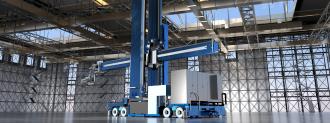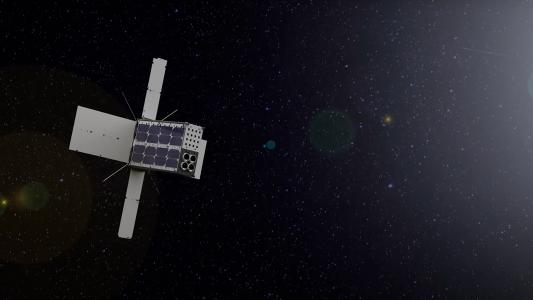Dutch company Xyrec recently demonstrated a 67-ton industrial robot that uses lasers to quickly strip paint from aircraft — twice as fast as human cleaners. The massive machine will be made available as part of a new trend called “robots as a service.”
Fresh coat: Commercial jets are essentially giant billboards for their makers, and to keep the branding, logos, and designs looking fresh, the planes are regularly stripped and repainted.
“Large airlines with hundreds of aircraft, such as United or Southwest, have a schedule to repaint their aircraft with certain regularity, usually every six years or so,” Nikki Thomas, an executive at independent aircraft painting company IAC, told CNN.
Xyrec’s industrial robot can de-paint a Boeing 777 in five days. A team of workers needs about 11.
The challenge: Paint can be removed from planes via sand-blasting, but the more standard approach is to strip it using chemicals.
It can take a team of more than a dozen workers about 11 days to de-paint a Boeing 777, Peter Boeijink, Xyrec’s president and founder, told the San Antonio Report. During that time, they’re exposed to harsh chemicals, which drip to the floor and have to be cleaned using a lot of water.
The idea: Xyrec’s industrial robot needs just two operators and five days to de-paint the same plane.
It does this by blasting the paint with a powerful laser that transforms it into a gas. A vacuum component on the robot then instantly sucks up and filters the evaporated paint, leaving behind a gray dust.
Xyrec had a custom hanger built for its industrial robot — which it says is the world’s biggest — at Port San Antonio, and it recently gave the public a chance to come see the bot in action.
Robots as a service: Boeijink says Xyrec’s industrial robot is now ready for market, but it doesn’t plan to sell the bots to customers outright — instead, it’ll rent the machines out as part of an increasingly popular model known as “robots as a service.”
This model makes it easier for companies to try out the latest in robotics because they don’t have to spend a massive amount of money upfront — they can pay a monthly or yearly subscription fee for the robot and then end the contract if it stops benefiting their business.
The model also gives them more flexibility — they can scale up or down their robotic operations depending on their needs at any given time — and they don’t have to worry about the robot breaking down, either, as the agreements include maintenance.
At the end of a contract, the robot maker gets their machine back. They can then refurbish or update the bot before renting it out to another customer.
Looking ahead: Xyrec is still waiting to lock in its first customer, but according to Boeijink, “there is serious interest” in the company’s industrial robot.
It’s not just courting those with massive aircraft, either. Xyrec designed the bot to strip paint from aircraft as small as fighter jets — in those instances, the laser system is just affixed to a smaller mast and arm so that the machine will fit in the smaller hangars.
We’d love to hear from you! If you have a comment about this article or if you have a tip for a future Freethink story, please email us at [email protected].






